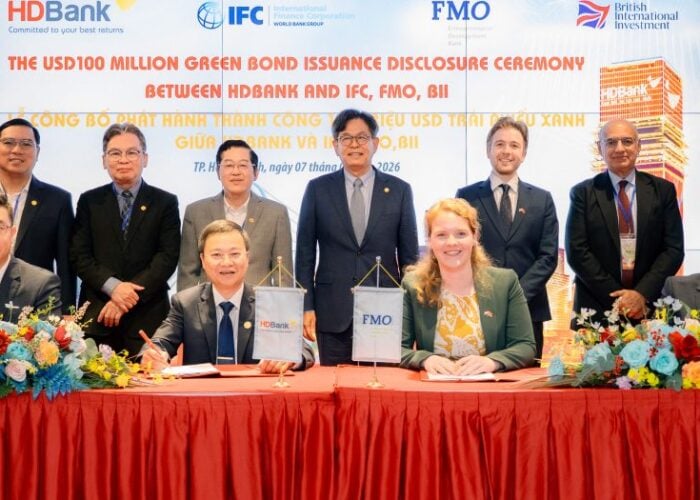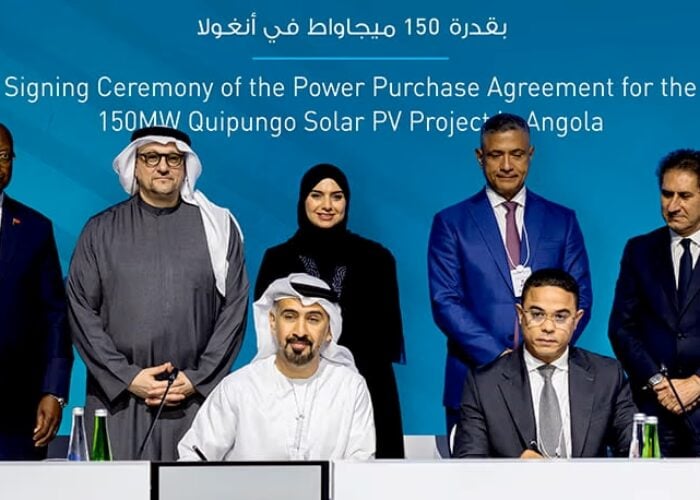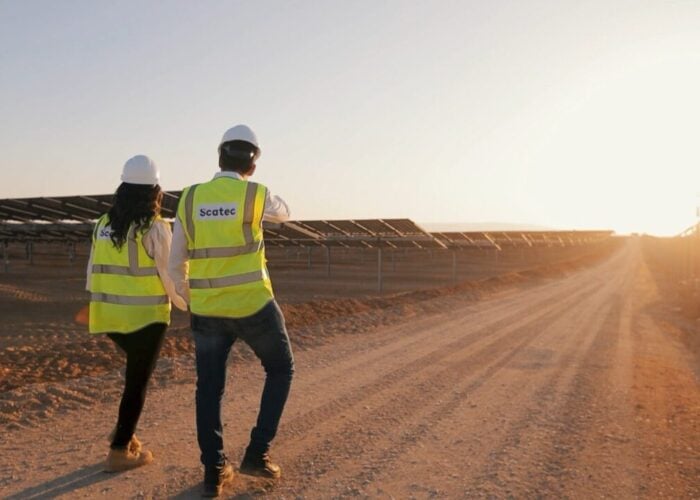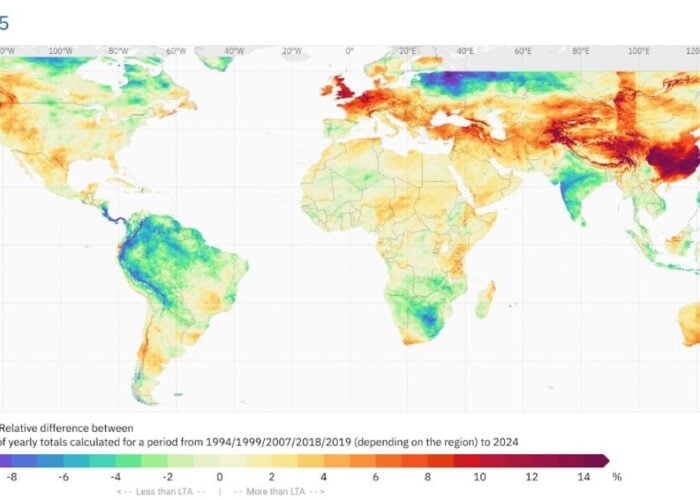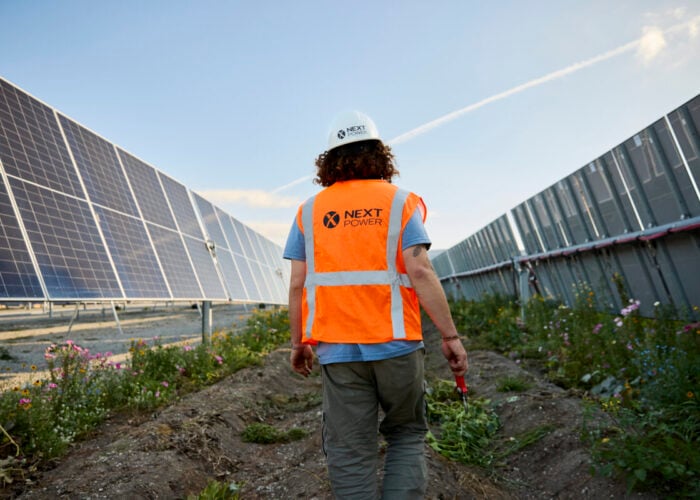European buyers this week have been warned they could face imprisonment if they're not vigilant in confirming that products are in compliance with the EU-China price undertaking. Meanwhile, the solar industry in the US appears to be continuing to defend its turf in response to tariffs that, on the face of it at least, are less dramatic. It would seem at least that the US government agencies are taking monitoring and enforcement less serious than their European counterparts.
A few weeks ago, the Solar Energy Industries Association sent a delegation to China on a mission to try to negotiate peace. SEIA's proposal is quite complex but it counters the rumoured Obama administration plans to impose a price floor and maximum price import restriction similar to that in the European Union.
Try Premium for just $1
- Full premium access for the first month at only $1
- Converts to an annual rate after 30 days unless cancelled
- Cancel anytime during the trial period
Premium Benefits
- Expert industry analysis and interviews
- Digital access to PV Tech Power journal
- Exclusive event discounts
Or get the full Premium subscription right away
Or continue reading this article for free
With module prices around US$0.63 per watt according to NPD Solarbuzz, almost any price floor would all but destroy the US downstream market. In fact, latest figures from GTM Research suggest that the trade tariffs as they stand are having the desired effect in “stabilising” prices, i.e. increasing prices 9% in 2014.
SEIA's proposal analyses the price differential between cells made in China and Taiwan, which is about 8c per watt. That would then be split between a five-year fund to encourage US manufacturers.
SEIA's China's delegation included Rhone Resch, its president and CEO, and John Smirnow, vice president of trade and competitiveness.
In the absence of any further information from SEIA itself, we have to assume that the negotiations didn't have the traction as hoped. But just before the delegation left for China, Smirnow insisted that negotiating for peace is more effective than legislating for a trade war.
“What we've been working on in the last year or so is trying to find a mutually satisfactory resolution of the US-China trade conflict,” he said. “The objective is an industry-led solution be the basis of the solution between US and Chinese governments.
“Our understanding is that US and China have engaged to try to come out with a proposal. Unfortunately, the intent of that proposal is to raise prices in the US market. We oppose that. As prices continues to fall, solar continues to grow. Any minimum price or quota mechanism is the wrong solution for the US market.
“We see SEIA's solution as a win-win solution, looking at it from a mutually satisfactory perspective recognising the interests of the full global supply chain and not just the interests of one or two companies or a particular segment of the solar industry.”
Political compromise very often means an outcome that no one is entirely unhappy or happy with – everyone wins and loses a little bit. That may be the case with the trade tariffs, although the only winners so far seem to be Taiwanese cell manufacturers. But so far, the industry response to the SEIA proposal has been muted – nothing other than a free market will work, they seem to be saying, discounting, of course, the generous subsidies Chinese manufacturers received in the first place.
Robert Petrina, managing director for Yingli Green Energy Americas, said: “When we saw this coming we realised that we would have to defend ourselves very vigorously. We do not believe we are unfairly subsidised and we do not believe we've dumped product – period. The dumping threshold is very low; the process at the International Trade Commission was very clear that there wasn't much chance of us not being penalised and we worked around that expectation.
“It could have been worse if the source of the cell had defined the provenance of the module. But ultimately it still had a very large impact on the overall market. For us it was quite destructive because it created uncertainty for clients who have long lead times.
“If you look at the expansion between 2010 and 2011 it was the same across the world. The market was on fire, the incentives in Europe were substantial and everyone was expanding.
“For Yingli and some of the other suppliers it was a very difficult period because it was very unclear what the tariffs could be – anything from 0-250% It could have been devastating. And we worked very closely with a number of customers in making sure they were taking the right amount of risk.”
The tariffs don't appear to have affected their ability to sell modules (see slide 1). But their revenues are still thwarted by unsustainable prices (see slide 2).
“Ultimately the whole outcome of the trade action is that prices have gone up and profits shifted to non-Chinese cell manufacturers,” he said. “If you look at what that is doing it's going to create demand destruction at the margins on projects that need to compete with other sources of energy and that was something that was lost a lot in the actual trade case.”
But what about downstream, how has that been affected? For Barry Cinnamon, a residential installer in Saratoga, California, the consequences have been small since module costs are such a small proportion of overall installation costs.
But for utility-scale developers, the picture is very different.
Latest figures suggest a larger than forecast rise in gigawatt installations this year in the US to 13GW by the end of 2013, much of it driven by large-scale additions.
Recurrent Energy has had a banner year, with122MW completed so far in 2013. Last month, it sold 106MW across six projects in Arizona and California to Google and KKR. Duke Energy acquired the 5MW Sunset Reservoir Solar Power Project serving San Francisco. By spring, Recurrent will have delivered more than 500MW total to operation since the company’s founding.
But the trade tariffs have been a serious headwind to business, said Sheldon Kimber, chief operating officer at Recurrent Energy.
“You have to ask yourself, how is this good for US manufacturing and jobs? It doesn't seem to be doing anything at all,” he said.
“The cost of the policy on our business over the past 9 to 12 months has been a 10-15c jump in module prices. Some of that could be attributable to demand recovery. But there's at least a good 10c or 20-25% jump in the cost of a module and a 5-10% jump in the cost of an installation that's adding easily US$3 to US$5MWh that we can deliver. That's huge. That's enough to keep us out of some markets, such as Texas and some of the newer solicitations in California.
“At best, you blow up good contracts and developers who are doing their best to educate themselves about what costs could be and bid responsibly. And at worst, you encourage blind speculation. So you're encouraging those who would bid $50MWh and hope that the module curve catches up. That's garbage. Those are not the folks you want out there developing renewable energy projects.
“We're intervening to protect a company that really isn't at the competitive end of that supply stack to begin with. All that's really come out of this process is that US policy has shifted a huge amount of economic rents to Taiwan. The Taiwanese cell manufacturers have become the bottleneck, module prices have gone up and all that money has gone directly into the pockets of the Taiwanese cell manufacturers.
“Energy policy is what we should be focused on here, not economic development policy. We can't have renewables deliver on the climate and the economy. That's a big load to bear for one growing industry.”

